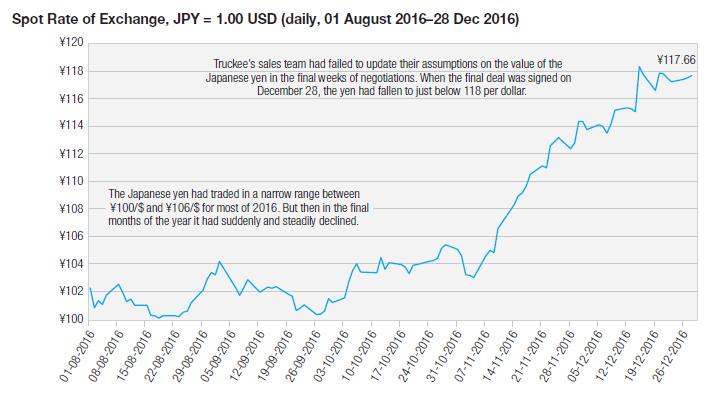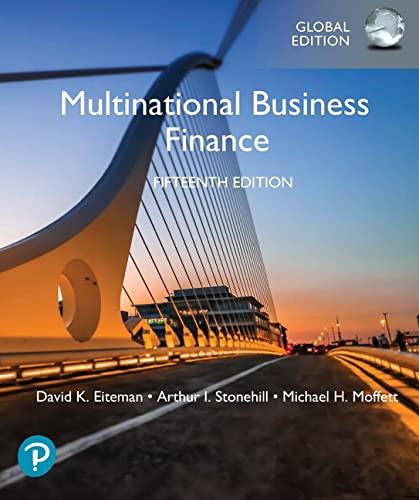Centurion Batteries Japanese Yen Exposure. Centurion Batteries Ltd. is a privately held battery manufacturer located just outside
Question:
Centurion Batteries’ Japanese Yen Exposure. Centurion Batteries Ltd. is a privately held battery manufacturer located just outside of Melbourne, Australia.
The company is one of the leading manufacturers of calcium plated batteries, specifically for the automobile market. Centurion has been in intense contract negotiations with a Japanese automaker for months.
It was late December 2016, and both sides wanted to conclude a deal before the new year.
The Japanese automaker wanted a two-year supply agreement for 200,000 Calcium-plated 12V battery packs per year. Battery prices had been dropping dramatically for years, but Centurion’s current sales price of A$180 per battery for the 12V model
(Ultra Hi Performance NS40ZLX MF Centurion)
had held firm for months. The buyer was pushing for a lower unit price, but Centurion wanted a longer contract with higher volumes in return. After months of negotiations, the buyer agreed to increase the contract to a three-years and increase annual purchases to 300,000 units. But in return, the buyer wanted a price of $147 per unit, and it wanted to pay in Japanese yen. Centurion had countered with the following proposal. At an average price of $150 per unit, and a current spot exchange rate of ¥75.00/A$, Centurion proposed a contract of 260,000 units per year, for 3 years, with an annual purchase amount of:
Annual Contract Amount = 260,000 * A$150
* ¥75.00/A$ = ¥2,925,000,000 The buyer accepted the counterproposal in 48 hours and a sale agreement was signed and posted. The deal was done.
Almost immediately, the corporate treasury group at Centurion was upset about the contract. They argued that the Japanese yen had begun to plummet in value against the Australian dollar in the past two months, so accepting the payment in Japanese yen was too risky. Also, the quote had been based on a spot rate of ¥76.00/A$, but the rate had moved to ¥78.00/A$
over the past two weeks.
 Centurion’s corporate treasury wanted to move immediately to hedge the longterm exposure. (Internally, the group had discussed that it was technically an anticipated transaction exposure, not a pure operating exposure, since it was a single transaction—but contractual.
Centurion’s corporate treasury wanted to move immediately to hedge the longterm exposure. (Internally, the group had discussed that it was technically an anticipated transaction exposure, not a pure operating exposure, since it was a single transaction—but contractual.
It would continue over a three-year period, but none of it was as yet on the books.) After consulting with their bankers, they wanted to use a crosscurrency swap in which Centurion would pay yen and receive Australian dollars. Their banker offered a swap where Centurion would receive Australian dollar LIBOR in return for paying Japanese yen at 3.000%.
The swap agreement would be for three years and all payments made quarterly—to match the expected yen cash inflow from the Japanese customer.
a. Given the final contract value, what would the Japanese buyer believe they are paying per battery?
b. What is the amount of the currency exposure for Centurion?
c. If the swap agreement is for a 3-year loan at 3.000% quarterly, what is the principal amount of the loan obligation (notional principal)?
d. The sales team had clearly not updated their exchange rate assumption prior to making the final contractual offer. As a result, assuming the swap was executed the same day as the closing spot rate quote, what was the actual exchange rate locked for the three-year period?
e. In retrospect, what do you think Centurion should have done to manage currency risk more effectively?
Step by Step Answer:

Multinational Business Finance
ISBN: 9781292270081
15th Global Edition
Authors: David Eiteman, Arthur Stonehill, Michael Moffett





